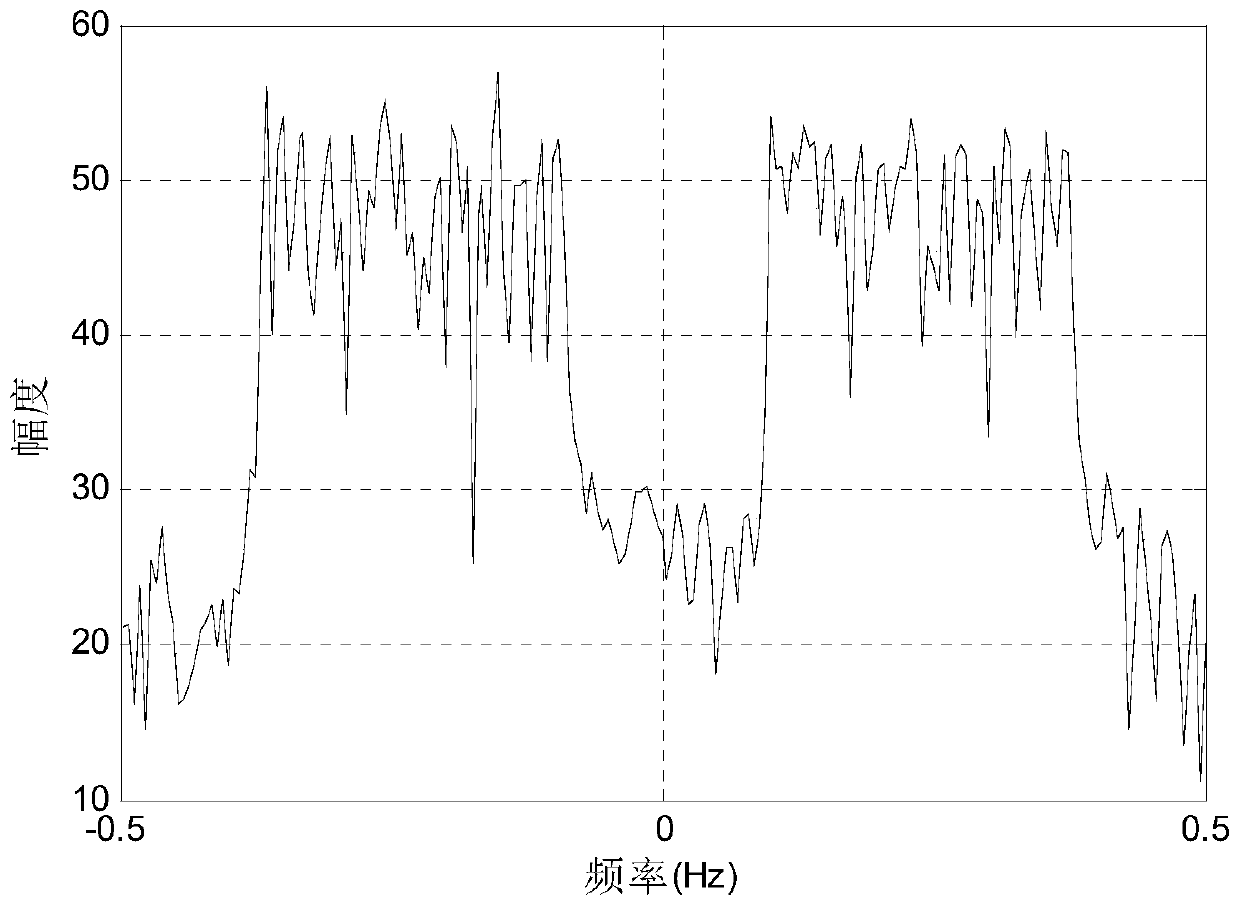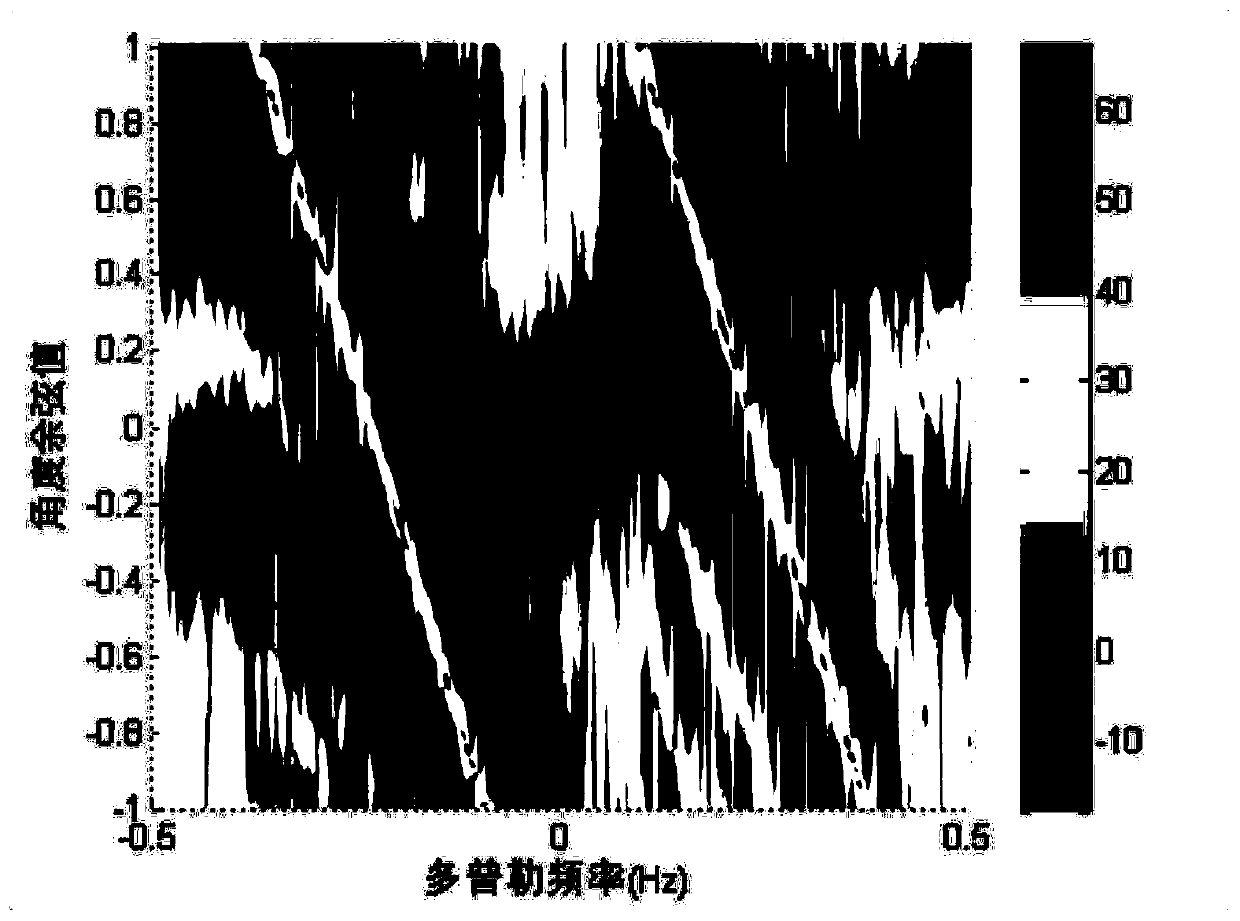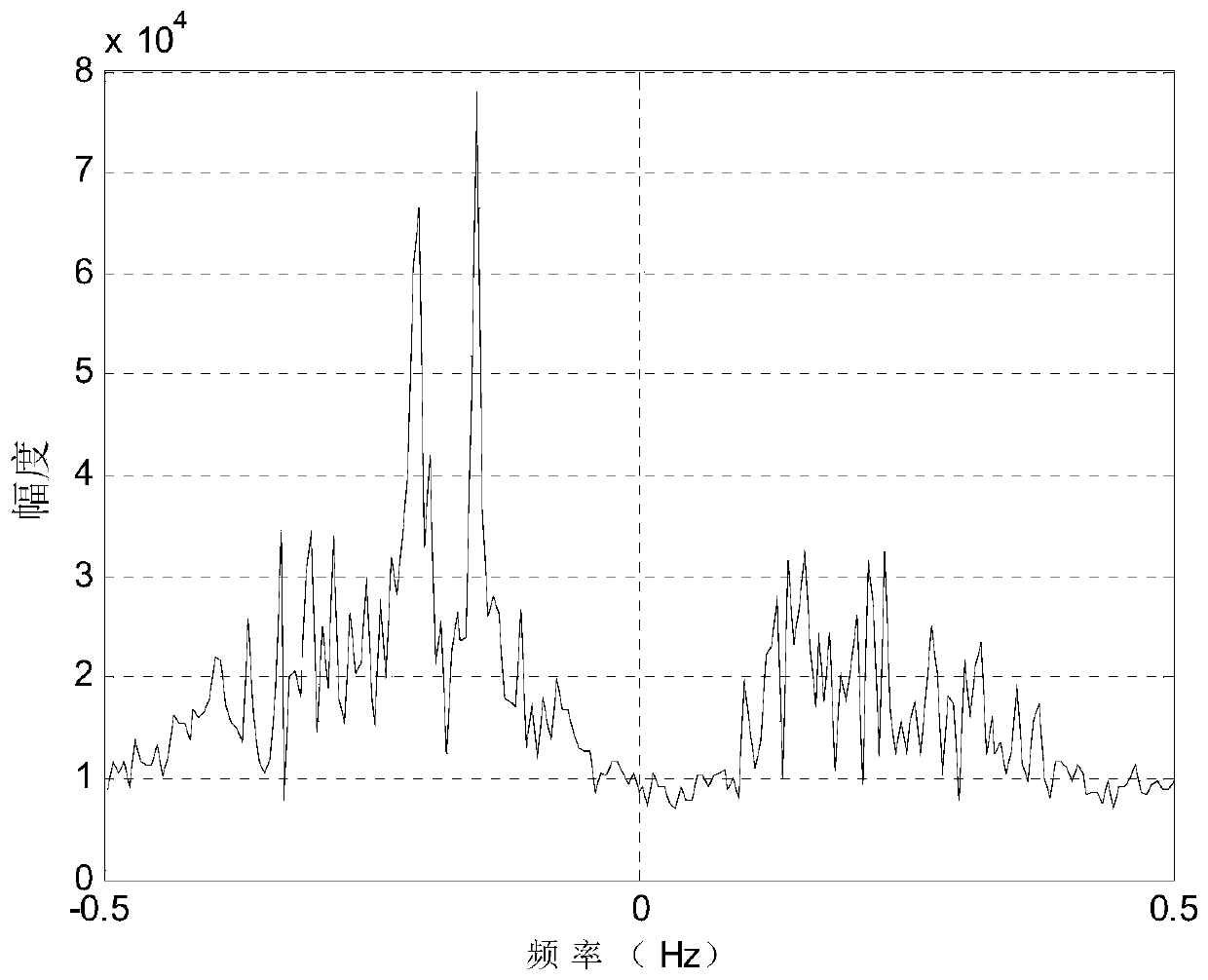A high-resolution azimuth method for shipborne high-frequency ground wave radar based on virtual aperture
A technology of high-frequency ground wave radar and virtual aperture, which is applied in the direction of radio wave measurement systems and instruments, can solve the problems of low azimuth resolution, high-resolution methods cannot be directly applied, and cannot distinguish adjacent targets well, achieving Signal-to-clutter ratio improvement and the effect of suppressing first-order sea clutter
- Summary
- Abstract
- Description
- Claims
- Application Information
AI Technical Summary
Problems solved by technology
Method used
Image
Examples
specific Embodiment approach 1
[0032] Specific embodiment one: a kind of shipborne high-frequency ground wave radar azimuth high-resolution method based on virtual aperture comprises the following steps:
[0033] Step 1: Set the antenna array of the shipboard high-frequency ground wave radar as a linear array, the number of array elements is M, and M is a positive integer greater than 3, the signal received by the antenna array of the radar is X(q), and the matrix X( q in each pulse period in q 1 ,q 2 ,q 3 ,...,q c The signals at the sampling time are respectively FFTed to obtain the Doppler spectrum F of the echoes of M array elements at each sampling time q1 (s), F q2 (s),...,F qc (s); The FFT is a Fast Fourier Transform, and q is a sequence of sampling moments, and q=[q 1 ,q 2 ,...,q c ], where q 1 ,q 2 ...q c is the sampling time, c is the total number of time-domain samples in each pulse period; the distance between the array elements is d, the wavelength of the radar signal is λ, the pulse ...
specific Embodiment approach 2
[0041] Specific embodiment two: the difference between this embodiment and specific embodiment one is: the Doppler matrix F of the echoes of the M array elements at each sampling moment is obtained in the step one q1 (s), F q2 (s),...,F qc (s) The specific process is:
[0042] Assuming that the distance between the elements of the antenna array is d, the wavelength of the radar signal is λ, the pulse width is τ, d needs to satisfy d≤λ / 2, and the speed of the array platform is v, the signal received by the radar antenna array is:
[0043]
[0044] x n,m (q) is the received signal of the mth array element of the radar antenna array in the nth pulse repetition period
[0045] Take the first column in the matrix X(q), that is, take the received signal of the first array element:
[0046]
[0047] Take q in each pulse period 1 ,q 2 ...,q c The signals at the sampling time are respectively subjected to fast Fourier transform (FFT) to obtain the Doppler spectrum at all s...
specific Embodiment approach 3
[0058] Specific implementation mode three: the difference between this implementation mode and specific implementation mode one or two is: the q obtained in step one in said step two 1 The Doppler matrix F of the echoes of M array elements at the sampling time q1 (s), use the orthogonal projection algorithm to suppress the first-order sea clutter in the frequency domain, and obtain the suppressed echo signal Doppler matrix F DPRS (s) The specific process is:
[0059]
[0060] In the formula, F DPRS (s) is the Doppler matrix of the echo signal suppressed by the orthogonal projection algorithm, w(1) P×M , w(2) P×M ,...,w(N) P×M are respectively the orthogonal weighting factors corresponding to the 1st, 2nd, ..., R Doppler units, p is the angle sequence, p=[p 1 ,p 2 ,...,p k ]∈[0,180], k is the total number of elements in the angle sequence, [f p1 (s 1 ), f p2 (s 1 ),...,f pk (s 1 )] T =w(1) p×M ×[f 1,1 (s 1 ), f 2,1 (s 1 ),...,f m,1 (s 1 ),...,f M,1 (s ...
PUM
 Login to View More
Login to View More Abstract
Description
Claims
Application Information
 Login to View More
Login to View More - R&D
- Intellectual Property
- Life Sciences
- Materials
- Tech Scout
- Unparalleled Data Quality
- Higher Quality Content
- 60% Fewer Hallucinations
Browse by: Latest US Patents, China's latest patents, Technical Efficacy Thesaurus, Application Domain, Technology Topic, Popular Technical Reports.
© 2025 PatSnap. All rights reserved.Legal|Privacy policy|Modern Slavery Act Transparency Statement|Sitemap|About US| Contact US: help@patsnap.com



